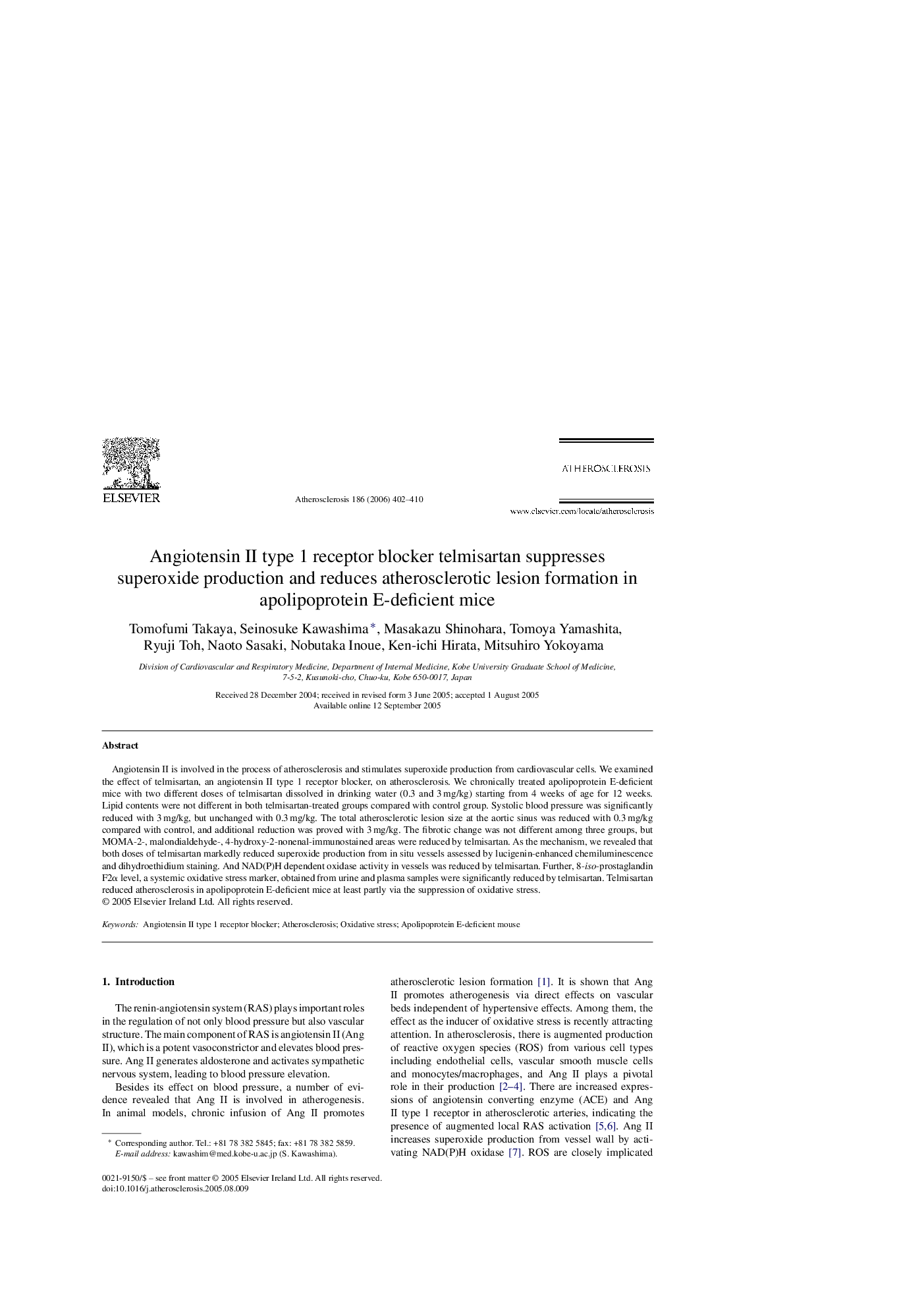| Article ID | Journal | Published Year | Pages | File Type |
|---|---|---|---|---|
| 2895267 | Atherosclerosis | 2006 | 9 Pages |
Angiotensin II is involved in the process of atherosclerosis and stimulates superoxide production from cardiovascular cells. We examined the effect of telmisartan, an angiotensin II type 1 receptor blocker, on atherosclerosis. We chronically treated apolipoprotein E-deficient mice with two different doses of telmisartan dissolved in drinking water (0.3 and 3 mg/kg) starting from 4 weeks of age for 12 weeks. Lipid contents were not different in both telmisartan-treated groups compared with control group. Systolic blood pressure was significantly reduced with 3 mg/kg, but unchanged with 0.3 mg/kg. The total atherosclerotic lesion size at the aortic sinus was reduced with 0.3 mg/kg compared with control, and additional reduction was proved with 3 mg/kg. The fibrotic change was not different among three groups, but MOMA-2-, malondialdehyde-, 4-hydroxy-2-nonenal-immunostained areas were reduced by telmisartan. As the mechanism, we revealed that both doses of telmisartan markedly reduced superoxide production from in situ vessels assessed by lucigenin-enhanced chemiluminescence and dihydroethidium staining. And NAD(P)H dependent oxidase activity in vessels was reduced by telmisartan. Further, 8-iso-prostaglandin F2α level, a systemic oxidative stress marker, obtained from urine and plasma samples were significantly reduced by telmisartan. Telmisartan reduced atherosclerosis in apolipoprotein E-deficient mice at least partly via the suppression of oxidative stress.
